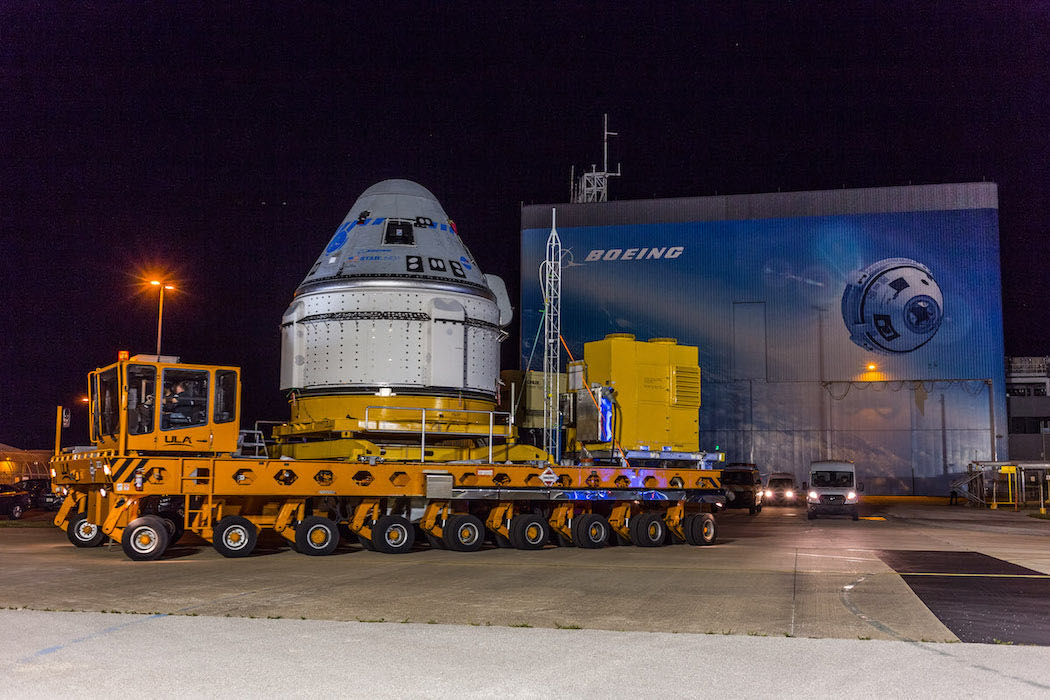
Boeing said Wednesday it will take on a $185 million charge in its third quarter earnings to pay for the latest setback on the Starliner crew capsule, bringing the company’s out-of-pocket costs on the troubled program to $595 million since 2019.
The company announced the new Starliner program charge Wednesday in a quarterly earnings release. Officials said the $185 million charge was the primary reason for a reduction in revenue for Boeing’s defense, space, and security business unit from $6.8 billion in the third quarter of 2020 to $6.6 billion during the same period of 2021.
The $185 million charge was “driven by the second Orbital Flight Test now anticipated in 2022, and the latest assessment of remaining work,” Boeing said in a press release.
In 2019, the Starliner program appeared to be on the verge of flying astronauts to the International Space Station under a $4.2 billion contract with NASA. But the first Starliner unpiloted orbital test flight in December 2019 ended prematurely due to software problems.
Boeing and NASA agreed to launch a second uncrewed test flight, called OFT-2, to ensure the Starliner spacecraft is ready to carry people into orbit. That resulted in a $410 million charge on Boeing’s fourth quarter earnings in 2019.
The OFT-2 mission was poised for launch Aug. 3, but a routine pre-flight test revealed 13 valves inside the Starliner’s service module were stuck, preventing propellant from flowing through the ship’s propulsion system.
Managers decided to roll the spacecraft and its Atlas 5 rocket back to an integration building at Cape Canaveral Space Force Station for further troubleshooting. Engineers coaxed some of the valves open by applying heat and higher voltages, but four were still unresponsive.
Teams disconnected the spacecraft from its Atlas 5 launcher and returned it to Boeing’s factory at nearby Kennedy Space Center.
Inspections revealed corrosion in the valves. Engineers believe moisture somehow made its way into the service module, interacting with nitrogen tetroxide — used on the spacecraft as an oxidizer propellant — and creating nitric acid that corroded the valves.
Boeing officials said high humidity in the summertime Florida atmosphere was likely the source of the moisture that got into the valves.
John Vollmer, manager of Boeing’s commercial crew program, said in a press briefing Oct. 19 that the company will shoulder the costs of troubleshooting, fixing, and flying the Starliner’s OFT-2 mission. The earliest the mission could launch now is in the first half of 2022, likely pushing the first crew fight on a Starliner spacecraft to the end of 2022, at the earliest.
“There are no additional charges that will be going to the government for this,” Vollmer said. “This is something the Boeing Company will make sure that we’ve got covered as we get this vehicle prepared. We are 100% committed to fulfilling our contract with the government, and we and we intend to do that.”
NASA’s commercial crew contracts with Boeing and SpaceX are fixed-price arrangements, meaning any extra costs are borne by the contractor.
SpaceX won a $2.6 billion contract from NASA to develop and fly its Crew Dragon spacecraft. The first Crew Dragon launched with astronauts in May 2020, and SpaceX has flown three more piloted Dragon flights since then, including two for NASA.
The next Crew Dragon mission is scheduled for launch Sunday with four astronauts heading to the International Space Station for a six-month expedition.
Email the author.
Follow Stephen Clark on Twitter: @StephenClark1.
